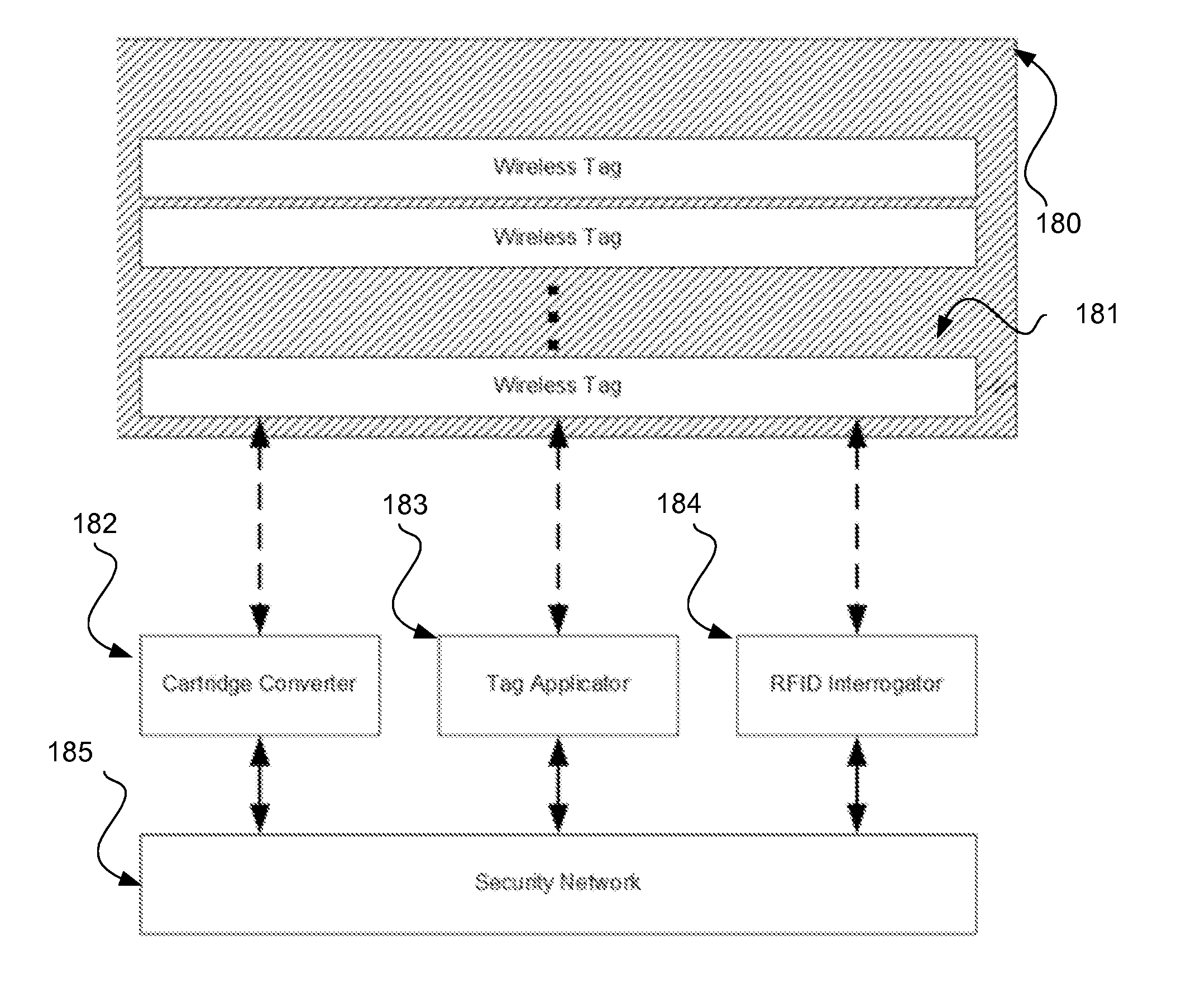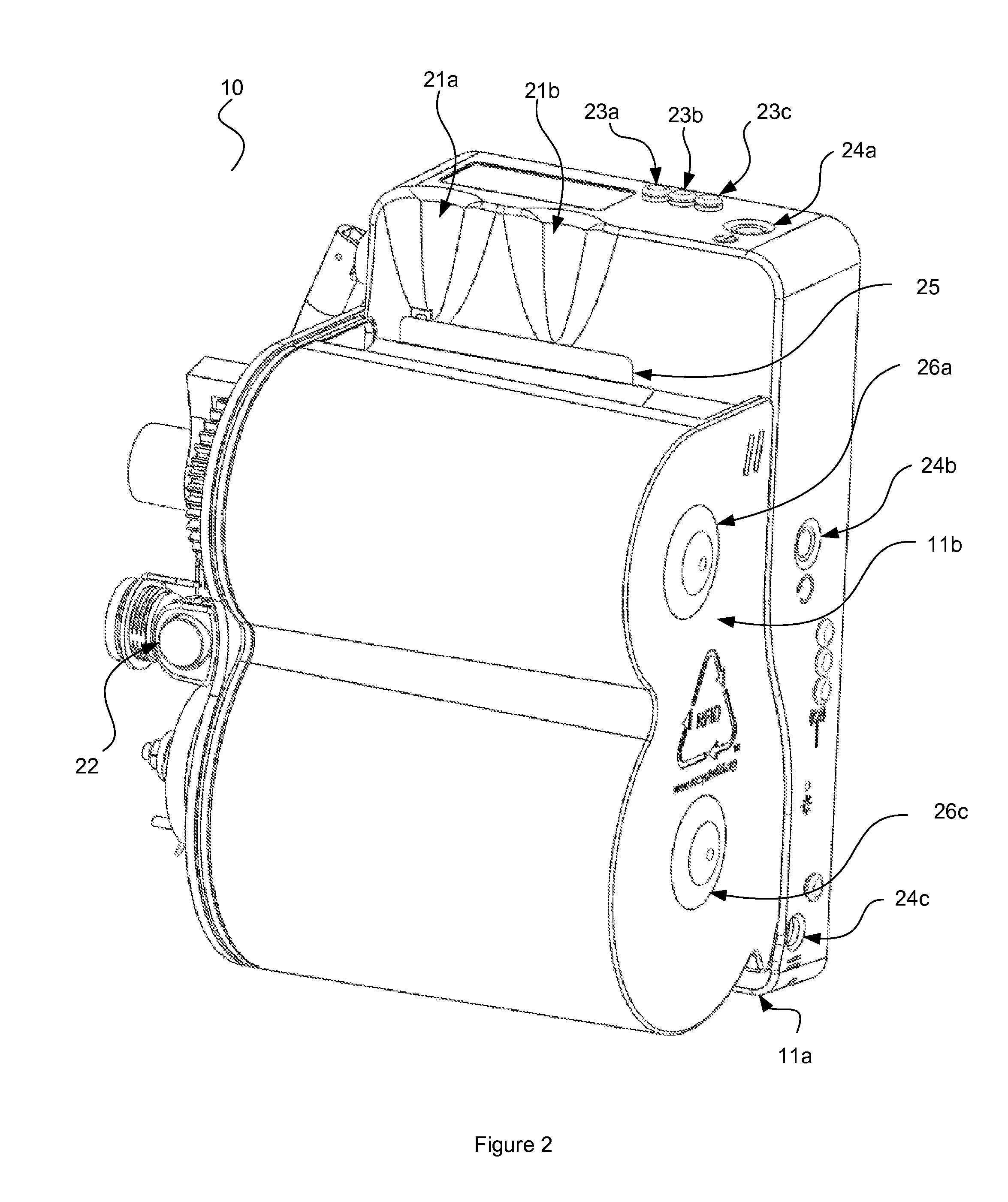Secure modular applicators to commision wireless sensors
a wireless sensor and applicator technology, applied in the field of systems, can solve the problems of unreadable labels, requiring line of sight and overdependence on the optical quality of labels, and affecting the commissioning effect of the devi
- Summary
- Abstract
- Description
- Claims
- Application Information
AI Technical Summary
Benefits of technology
Problems solved by technology
Method used
Image
Examples
Embodiment Construction
[0070]Making reference to various figures of the drawing, possible embodiments of the present invention are described and those skilled in the art will understand that alternative configurations and combinations of components may be substituted without subtracting from the invention. Also, in some figures certain components are omitted to more clearly illustrate the invention. In some figures similar features share common reference numbers.
[0071]Certain preferred embodiments are directed to methods for tagging metal objects such as aircraft, boats, or automotive parts, tools, equipment, hospital assets, or other manufactured goods with metal surfaces. Certain preferred embodiments are also directed to methods for tagging transportation containers, airline baggage, apparel, pharmaceuticals, manufactured items, and retail goods. In most instances, the tagging methods will be described with reference to containers such as loaded pallets, paperboard boxes, corrugated cartons, pharmaceut...
PUM
 Login to View More
Login to View More Abstract
Description
Claims
Application Information
 Login to View More
Login to View More - R&D
- Intellectual Property
- Life Sciences
- Materials
- Tech Scout
- Unparalleled Data Quality
- Higher Quality Content
- 60% Fewer Hallucinations
Browse by: Latest US Patents, China's latest patents, Technical Efficacy Thesaurus, Application Domain, Technology Topic, Popular Technical Reports.
© 2025 PatSnap. All rights reserved.Legal|Privacy policy|Modern Slavery Act Transparency Statement|Sitemap|About US| Contact US: help@patsnap.com



